![]()
Most of us want to help others. Physical therapy is an excellent way to heal people while making a good living. If you’re great at making feel comfortable, interested in the human body, and want a fulfilling job that will allow you to work throughout the country, physical therapy might be right for you.
In this helpful guide we’ll explore physical therapy degrees, answer common questions about physical therapy, look at what you’ll get out of your physical therapy degree, and much more. Let’s dive in!
What is Physical Therapy?
Physical therapy is the treatment of injuries, diseases and other medical maladies using massage, heat treatments, exercise, and other methods that don’t involve surgery or drugs.
Physical therapy can save patients time, money, and unnecessary surgical or medicinal interventions as they heal from a wide range of conditions. Physical therapy can lead to sustainable, holistic improvements for patients, and often produces comparable or better results to surgery or drugs, with less unwanted complications like drug addiction, failed surgeries, etc. Physical therapy can be a great way to naturally overcome chronic pain and find exercise, dietary and other therapeutic means to ward it off consistently. By strengthening patients with physical therapy, you can help them overcome what’s ailing them AND make other improvements in their health that pay dividends outside of why they initially came to you for help.
How Should You Choose Between Physical Therapy Degrees?
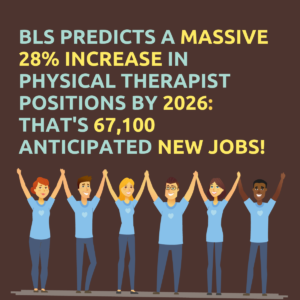
When you’re considering what physical therapy degree is right for you, weigh the following. Remember, physical therapy used to be accessible to students through Bachelor’s degrees, but now a doctorate is necessary, in addition to passing state licensure examinations. In fact, the American Physical Therapy Association (APTA) is working to ensure that by 2020 all fully licensed physical therapists have a doctorate. With that in mind, while you go through this guide and throughout your search for a physical therapy degree, mull the following over:
- What is your educational and career background? How has it prepared you to study and work as a physical therapist?
- What are your career goals? How will a degree in physical therapy help you achieve them?
- It’s fine to be still figuring out what you would do with a physical therapy degree, but it will be useful to have an idea what part of physical therapy you want to work in to inform your search for a physical therapy degree.
- How much can you afford to pay in tuition and other associated costs of a physical therapy degree, and how much are you able to borrow so you can attend one?
- Not every physical therapy degree costs the same amount, but think about your finances and how they might change throughout earning the degree. Once you have a physical therapy degree, how much can you earn and how much will you be able to pay back each month?
- Remember, it’s better to stay away from private, high-interest loans in favor of public ones. When possible, it’s best to choose a program you can afford, and find programs that offer you grants or scholarships, or find them outside of a prospective program.
- Depending on the delivery format you choose, you can save time and money while earning your physical therapy degree.
- How much time do you have to take your physical therapy degree daily, weekly, and overall before graduating?
- What’s the best delivery format for you in a physical therapy degree program? Do you want to attend full-time, part-time, in-person, online, or in a hybrid of online and on-campus education?
- What specialization would you like to work in within physical therapy (more on that later)?
- Where would you like to work and live while you attend and after finishing your physical therapy degree?
- Depending on where you study you’ll gain advantages finding physical therapy employment through your school’s professional network. There are also different parts of the country that have higher and lower demands for physical therapists.
What Skills do Physical Therapy Degrees Build?
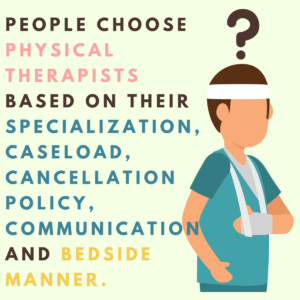
Physical therapy degrees build many skills that will pertain throughout your career and life. Some of them are:
Listening
A common problem in healthcare overall is patients, especially women, being ignored or not adequately listened to by their healthcare providers. This negligence leads to a lot of unnecessary pain, and the failure of healthcare providers to address patient concerns and needs. You can break this unhealthy cycle by listening to the people you treat, and it will significantly improve the relationships in every part of your life.
Coordination and Strength
Physical therapists need to be physically fit. In these roles you’re often on your feet, physically supporting your patients, using weights and equipment and massaging for hours a day. Due to this, and to set an excellent example for patients, you’ll need to be fit, healthy, and coordinated. Your fitness will pay dividends throughout your life. Fortunately, physical therapy cohorts attract people who care about fitness, and a community of like-minded peers can be a massive boon towards maintaining and improving your fitness goals.
Giving Instructions
Listening to patients is extremely important. Just as necessary is communicating what your treatment plan is, calming nervous, upset and traumatized patients, and explaining what they need to do to recover successfully. As a physical therapist, you need to be a motivating coach to your patients, and physical therapy degrees will help you learn how to do this magnificently.
Technology Skills
Increasingly, physical therapists are making use of health apps, patient-tracking software, and burgeoning technology. Building and maintaining technology literacy is a growing part of physical therapy, and programs that address this will be beneficial to your career.
Reading Comprehension and Research
Physical therapy is constantly changing and has always been an incredibly complex field. Understanding what you read, doing research, and staying up to date with the latest technologies, methods, and findings on a range of conditions and treatments for them will go a long way in giving you a successful physical therapy career, and will be useful throughout your life.
These are just a smattering of the areas physical therapy degree programs cover. Now let’s take a look at what we’ve done to help you:
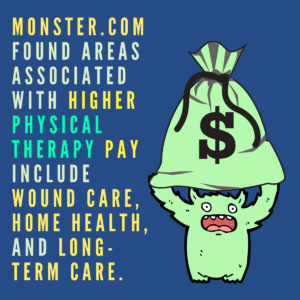
How Can We Help You with Physical Therapy?
Here at Degree Query, we’ve done extensive work to help you find the right degree for you, build resources like feature articles that help you in your search, show you what your options are regarding employment after earning higher degrees, and answer common questions you have. Here are some of the results we’ve come up with that pertain to physical therapy and adjacent fields. Remember, we’re continually updating content, so whether you’re interested in physical therapy or any other discipline, come back for more information and resources:
Questions we’ve answered that pertain to physical therapy:
- What Associate’s Degrees Are Good for a Career in the Health Care Industry?
- What degree do I need to be a physical therapist?
- What degree do I need to become a Chiropractor?
- What can I do with a degree in Sports Medicine?
- What degree do I need to become an Occupational Therapist?
- What Degree Do I Need to Be an Audiologist?
- What Degree Do You Need to Be a Speech Therapist?
- What Degree Do I Need to Be a Massage Therapist?
Here are rankings we’ve done that pertain to physical therapy:
- The 20 Best Jobs Without a 9-to-5 Work Schedule
- Top 10 Careers for Extroverts
- Top 20 In-Demand Healthcare Careers
Now let’s look at some of the specializations you can find within physical therapy when selecting a degree.
What are the Different Areas in Physical Therapy?
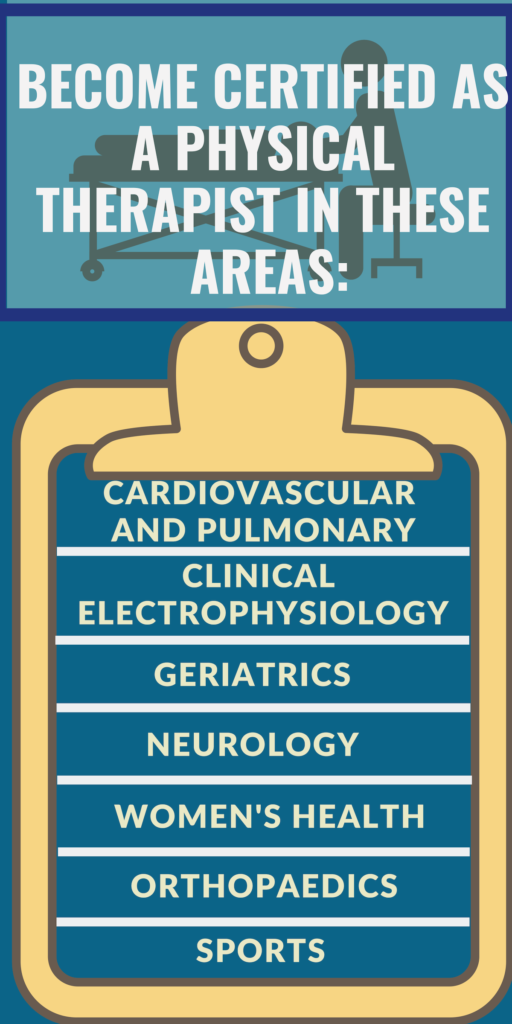
Physical therapy degrees are a lot like medical school programs in that they try to cover all the areas a physical therapist could deal with to create well-rounded, experienced graduates. You can choose to further specialize in areas of physical therapy through one-year residency programs. Here are some of the areas you can become a certified specialist according to the American Board of Physical Therapy Specialties (ABPTS).
- Pediatrics: if you want to work with kids, this is a great area to pursue within physical therapy. Common problems you’ll deal with include brain injuries, scoliosis, developmental issues, and cerebral palsy, among other issues.
- Sports: you’ll work with athletes who are dealing with an injury. Common issues you’ll tackle include ACL tears, shoulder injuries, concussions, and more.
- Women’s Health: here you’ll help women in different stages of their life with problems like osteoporosis, pre and postnatal care, pelvic pain, and more.
- Geriatrics: as the Baby Boomer generation grows older, there will be a significant uptick in need for physical therapists that work on age-related issues like arthritis, soreness, hip issues, and more.
- Cardiovascular and Pulmonary: if you want to work in heart health, this is a great option. You’ll do rehabilitation that deals with issues like heart disease, patients who have suffered heart attacks, chronic obstructive pulmonary disease (COPD), sarcoidosis, cystic fibrosis and more.
- Neurology: here you’ll work to treat problems in the nervous and spinal systems like injuries to the brain or spinal cord, neuropathy, fibromyalgia, cerebral palsy, and more.
- Orthopedics: this is considered the most popular physical therapy specialization. You’ll deal with issues impacting muscles, ligaments, bones, tendons, and joints.
- Clinical Electrophysiology: here you’ll use electrotherapy and deal with wound management. Electrotherapy can help patients avoid blood clots, boost wound healing, calm muscle spasms and more. You’ll work to mitigate abrasions, surgical incisions, diabetic ulcers and more.
- Oncology: in this specialization you’ll work with different kinds of cancer, helping patients deal with pain, muscle weakness, joint issues, lack of endurance, walking problems, numbness, loss of bone density and more.
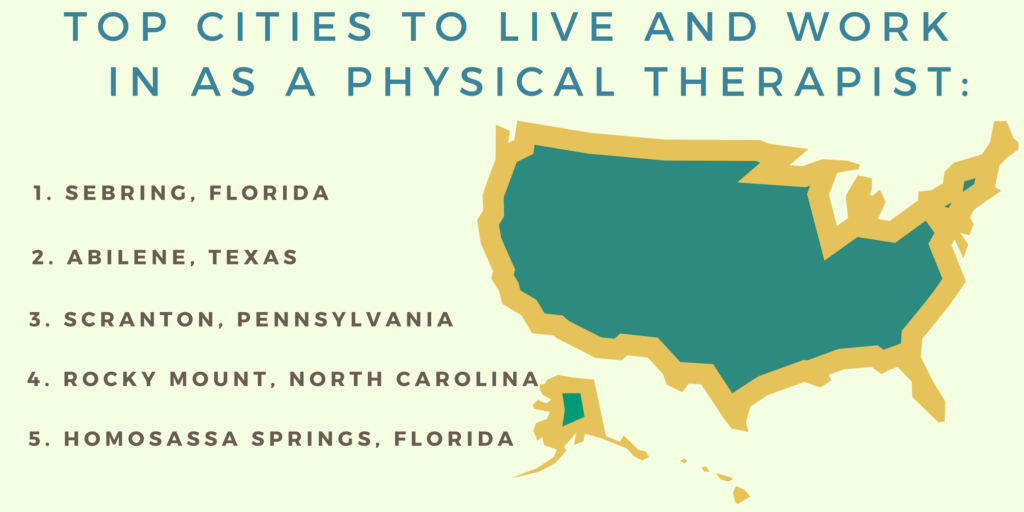
What are the Different Levels of Physical Therapy Degrees?
To become a fully licensed physical therapist you’ll need a doctorate. However, you can become a physical therapy assistant with lower degrees. Let’s explore:
Associate’s in Physical Therapy
In these two-year programs you can train to become a physical therapy assistant (or PTA). They include classroom lectures, clinical experiences, and more. You’ll study theory, science, and laboratory work as well.
Bachelor’s in Physical Therapy
These programs can be pre-physical therapy programs, or you can also opt for another health-related Bachelor’s like athletic training or exercise science or to study Biology on your way to higher degrees. In these programs, you’ll study for four years, and can become PTA-certified. Because graduate and doctoral level degrees are more common, this is a rarer choice within physical therapy, but can be an excellent stepping stone in your physical therapy education (Bachelor’s degrees are necessary to achieve higher degrees in physical therapy).
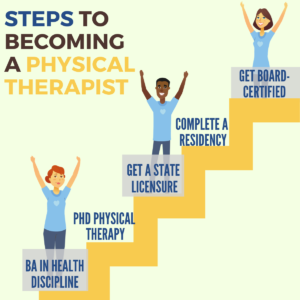
Master’s in Physical Therapy
The MPT is a post-baccalaureate degree that prepares students to take the Physical Therapy licensure exam. It has replaced the Bachelor’s as the means to become a physical therapist and is in the process of itself being replaced by doctoral programs that the APTA expect to be standard by 2020, making these programs increasingly rare. These are two year programs with the first year being focused on coursework and the second with clinical practice.
Doctorates in Physical Therapy
And here you’ll find the most common and direct way to becoming a fully licensed physical therapist today, and it will be an increasingly important credential in the future. These programs generally require a Bachelor’s degree in physical therapy or a health discipline. These programs require three to four years to complete. Students can opt for optional residencies and fellowships after earning their degree. In 2000, the APTA said:
“By 2020, physical therapy will be provided by physical therapists who are doctors of physical therapy, recognized by consumers and other health care professionals as the practitioners of choice to whom consumers have direct access for the diagnosis of, interventions for, and prevention of impairments, functional limitations, and disabilities related to movement, function, and health.”
What Can You Do with a Physical Therapy Degree?
Working in physical therapy is different for everyone. Here are a few of the of the roles and locations you can fill and work in within physical therapy:
Hospital Health Care
Here you’ll work in hospitals to provide intensive care for patients dealing with significant trauma or recovering from major surgery. You’ll be part of a rotating staff of physical therapists at the hospital, and take turns working with patients who need your help. Your hours will be more flexible and follow the hospital’s schedule in comparison to other PT roles.
Private Practice
Over 80% of physical therapists work outside hospitals, with many working in private practice. These include outpatient clinics, research facilities, home health care, hospices, government facilities, workplace environments, sports and fitness centers, rehab facilities, and much more. Here you can make use of specializations you’ve earned through residencies or fellowships in specific areas of physical therapy practice.
Physical Therapy Assistant
If you opt for a degree in physical therapy below the doctorate, you can work as a physical therapy assistant while you decide whether to continue your education. You’ll find yourself working in the same settings as physical therapists, only working underneath fully licensed PT professionals to hone your techniques and experience. Some of the places you could end up include skilled nursing, extended care facilities, outpatient clinics, sports training facilities, hospitals, and more.
There are also a host of roles related to physical therapy. Some may require extra licensing work. Here are some related options:
Audiologist
Here you’ll work to diagnose, treat, and manage a patient’s balance, hearing, and other ear problems.
Chiropractors
In these roles you’ll work on the neuromusculoskeletal system, which is made up of bones, muscles, nerves, ligaments, and tendons. You’ll manipulate and adjust spines, to manage back and neck pain, among other related issues.
Exercise Physiologists
Exercise physiologists create fitness and exercise programs for patients to bounce back from chronic diseases, boost cardiovascular functioning, body composition, flexibility, and more.
Occupational Therapists
Occupational therapists work with injured, ill, and disabled patients by focusing on improving function through everyday activities. Here you’ll help patients build, recover, develop and maintain skills they need to do live independently and work.
Recreational Therapists
In these roles you’ll create, manage and coordinate treatment programs for people with disabilities, injuries and other ailments. You’ll use activities like arts and crafts, drama, dance, music, sports, swimming, and community outings to help patient’s social, emotional and physical health.
Speech Therapists or Pathologists
Here you’ll diagnose and treat children and adults with communication and swelling disorders. You’ll work with people who have suffered a stroke, brain injury, hearing loss, developmental delay, or are dealing with Parkinson’s disease, autism, or a cleft palate, among other issues.
Education or Tutoring
In these roles you’ll educate families, caregivers, patients and healthcare professionals at community colleges, universities, and more, in areas like anatomy and biomechanics. You can also teach online from home.
Clinical Reviewing
Here you’ll look over therapists’ clinical notes and figure out if their treatment plans were justified. You’ll likely work for a rehab or insurance company to make sure billing and treatment were appropriate.
Technology and Robotics
The future of physical therapy is in technology. In these roles, you’ll bridge the gap between developers and the body of knowledge you’ve accrued throughout your physical therapy education. You can work as a clinical trainer, marketer, consultant, and in other roles to make sure the technology that’s being created in physical therapy works, and receives the attention it deserves.
Recruiting
In these roles you’ll work with employers and rehab professionals to build great matches. You’ll get to help people get hired by facilities they want to work for, playing matchmaker in physical therapy.
Writing
There’s a host of healthcare content created every day, and only more expected shortly. Here you can apply all you’ve learned to help patients, providers and more gain a better understanding of what physical therapists do, and so much more.
These are just some of the areas you can work in as a physical therapist. You’ll also find positions in sales, and you could start your own business, do significant research in the field, and so much more. It’s up to you. Now let’s explore how much you’ll earn as a physical therapist:
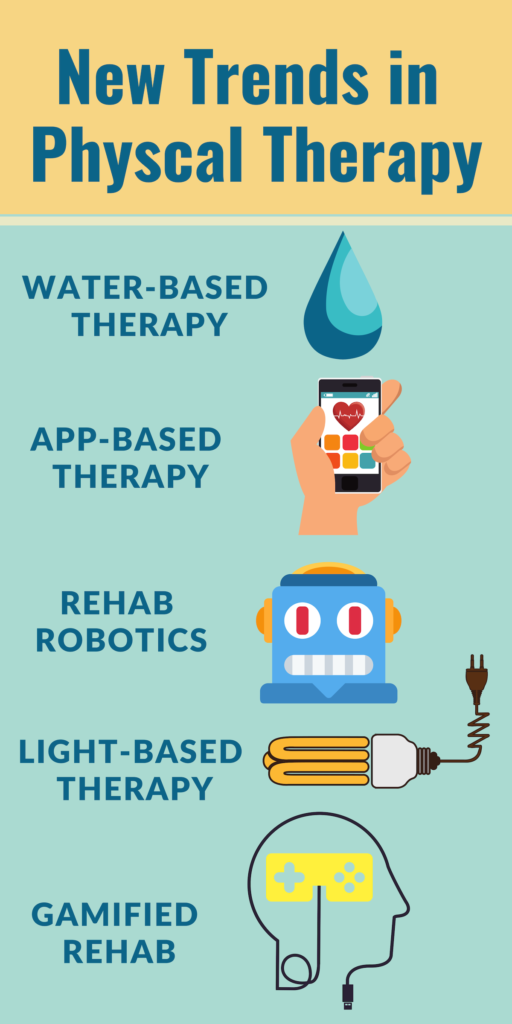
How Much Money Can You Make as a Physical Therapist?
Remember, your location, the degree you’ve earned, your experience and ability to network will all impact your earnings. That being said, working in physical therapy is stable and lucrative. Here’s what the Bureau of Labor Statistics has found about the field:
Physical Therapists
BLS found that Physical Therapists earned a median 2017 income of $86,850 annually or $41.76 per hour. There were 239,800 of these positions in 2016. The field is expected to grow 28% between 2016-26, which is much faster than average, translating to 67,100 new jobs.
Physical Therapist Assistants and Aides
BLS notes that Physical Therapist Assistants and Aides earned $46,920 as a median 2017 income or $22.56 per hour. There were 140,300 of these roles in 2016. The field is expected to grow 30% between 2016-26, which means 42,700 new positions.
What are Common Courses in Physical Therapy Degrees?
- Gross Anatomy
- Kinesiology
- Psychosocial Aspects of Disability and Illness
- Pathology and Medical Management
- Administration
- Disease Prevention and Health Promotion
- Public Policy and Physical Therapy
Physical Therapy Degrees in Conclusion
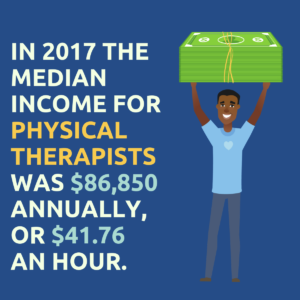
In conclusion, physical therapy is a rapidly expanding field that lets you do useful, fulfilling work while making a good living. The discipline is extremely diverse, and licensed physical therapists have significant mobility regarding where they work, and what they do in the jobs they choose. Our aging population will have especially growing needs for physical therapists, and the changes in our healthcare system and technology will be instrumental in creating new methods and roles for physical therapists to learn and fill. We hope that you’ve found this resource helpful, and remember to reach out directly to any programs you think would make a good fit for you so you can request more information. Check out the rest of Degree Query for all of your back to school needs, whether they be exploratory or concrete. Have a great day!
